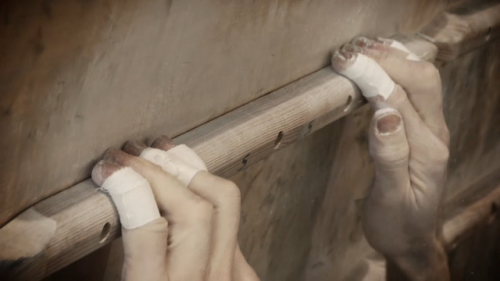„It’s worthless to train in high volume, high load, if there is no quality on it.“ (Edu Marin)
Edu Marin, der vor kurzem erst „Pengim Penjam (8c)“ onsight klettern konnte, zeigt in einem Video, wie er trainiert:
Dabei läuft sein Training jedoch eher im Hintergrund ab, während er sich mit zwei anderen Punkten beschäftigt:
- Edu Marin war schon als Kind/Jugendlicher sehr erfolgreich. Highlights, die im Video genannt werden: Mit 12 Jahren 7a, mit 13 8a, mit 14 8b, mit 15 8c, mit 16 8c+, mit 17 9a sowie zahlreiche gute Platzierungen bei Kletterwettkämpfen (Ticklist und Wettkampfergebnisse). Psychologisch ist es jetzt für ihn nicht leicht, um etwas zu kämpfen, dass er bereits früher erreicht hatte. (Nach einer Wettkampfsperre wegen Drogenmissbrauchs.)
- Laut Edu gibt es zwei Arten Kletterer: Die, mit sehr guten genetischen Voraussetzungen, und die, die hart arbeiten müssen („born or made“). Allgemein für alle gilt jedoch, dass das richtige Umfeld eine Grundvoraussetzung für Spitzenleistungen ist: Familiäre Unterstützung, finanzielle&emotionale Sicherheit.
Was kann man also aus diesem Video lernen?
- Natürlich, dass hartes Training sich auszahlt, auch wenn manche für die gleichen Erfolge mehr trainieren müssen als andere (s. Trainingsbücher).
- Außerdem, dass auch Spitzenkletterer mit der psychologischen Seite des Leistungssports kämpfen und an diesem Teil arbeiten (müssen).
- Dass man den Einfluss des richtigen Umfelds nicht unterschätzen sollte (das man sich natürlich zu einem Großteil entsprechend gestalten kann! Siehe dazu besonders 9 out of 10 climbers make the same mistakes).
- Und abschließend, wie wichtig intelligentes Training ist (s. Zitat zur Trainingsqualität am Anfang).

